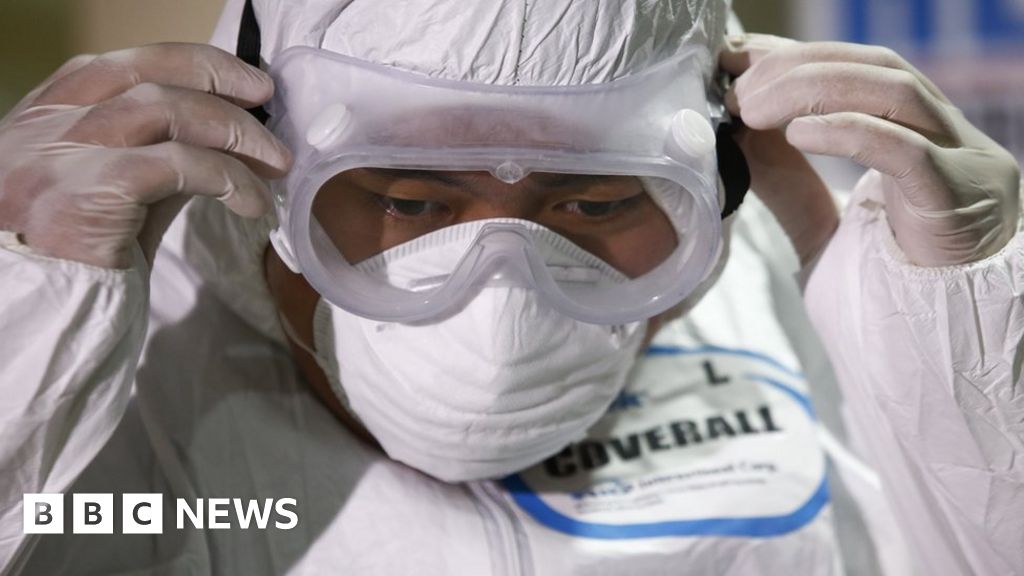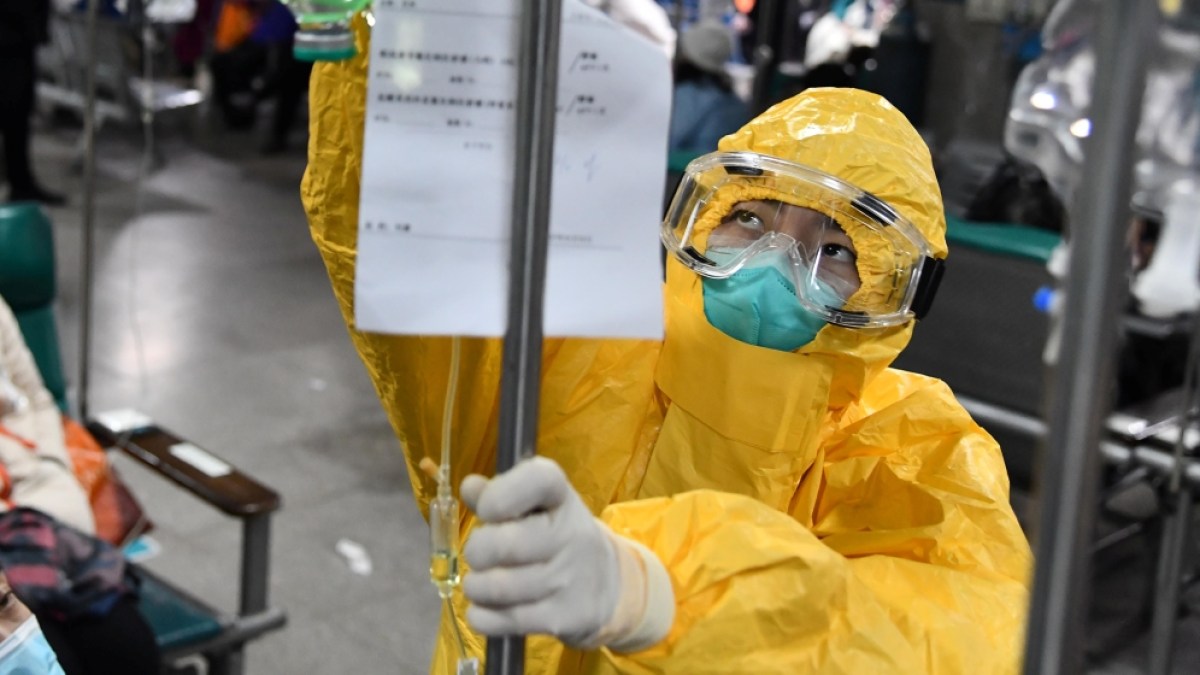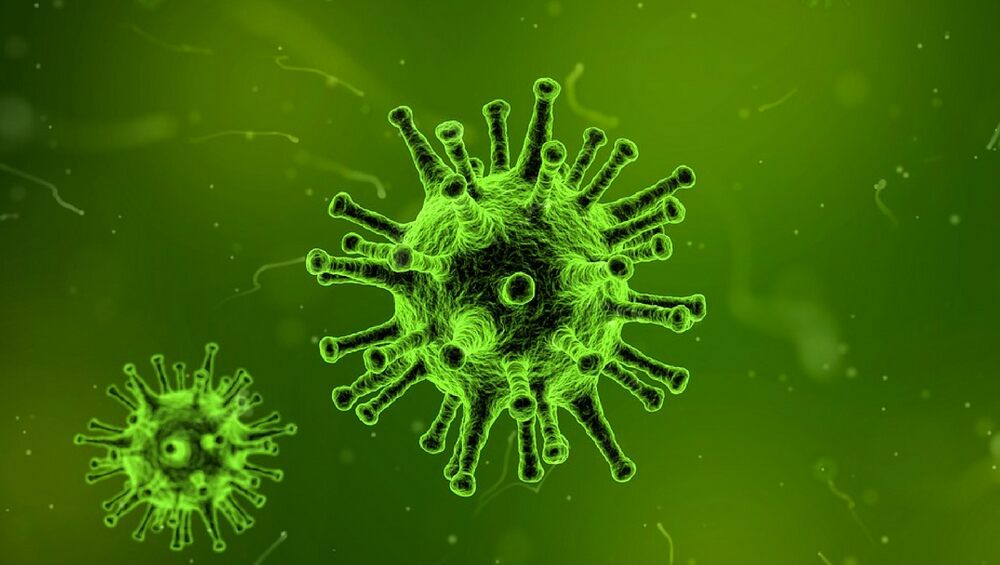
On the Origins of the 2019-nCoV Virus, Wuhan, China
James Lyons-Weiler, PhD – 1/30/2020 UPDATE – 2/9/2020 – IPAK HAS CONDUCTED FURTHER, IN-DEPTH STUDIES OF THE GENOMIC AN PROTEIN SEQUENCES OF THE 2019-nCoV CORONAVIRUSES AND THEIR R…
 jameslyonsweiler.com
jameslyonsweiler.com
James Lyons-Weiler, PhD – 1/30/2020
RECOMBINATION technology has been in use in molecular virology since the 1980’s. The structure of the 2019-NCoV virus genome provides a very strong clue on the likely origin of the virus.
Unlike other related coronaviruses, the 2019-nCoV virus has a unique sequence about 1,378 bp (nucleotide base pairs) long that is not found in related coronaviruses.
Looking at the phylogenetic tree recently published derived using all the full genome sequence, we see the 2019-nCoV virus does not have clear monophyletic support given the bootstrap value of 75 (Fig 1).
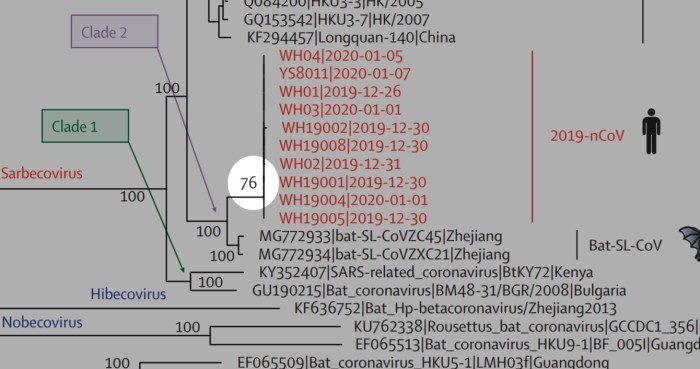 Close-up on Bootstrap value of 75 for available 2019-nCoV from Lu et al., 2020 The Lancet article [Full Text]
Close-up on Bootstrap value of 75 for available 2019-nCoV from Lu et al., 2020 The Lancet article [Full Text]There is no doubt that there is a novel sequence in 2019-nCoV; we confirmed this via sequence alignment. Here’s the DOT plot:
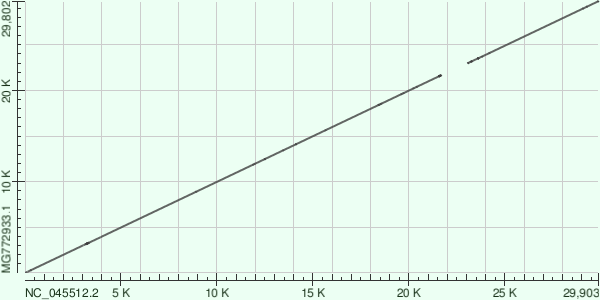
The gap in the line shows a lack of sequence homology beween the most similar bat coronavirus and 2019-nCoV. The inserted sequence, which should not be there is here:
inserted-portionDownload
A database search by the first team to study and publish the whole genome sequence for the origins of the inserted sequence turned up no hits (Ji et al., 2020). They conducted a codon-bias analysis which led them to speculate that perhaps there had been a recombination event between a coronavirus in snakes with a coronavirus from bats (Ji et al., 2020). [Full Text]
This led to criticism on Wired(3) with quote dismissing the snake origin hypothesis as lacking evidence. There is, however, clear evidence that the novel sequence, which I will refer to henceforth as INS1378, is from a laboratory-induced recombination event. Specifically,
(1) The sequence similarity to other coronavirus sequences is lower to its most similar sequences in any coronavirus than the rest of the genome (IPAK finding)
(2) The high sequence similarity of INS1378 to a SARS spike protein (2; IPAK Confirmed).
(3) We also found significant sequence similarity of INS1378 to a pShuttle-SN vector that was in use in the 1980’s in China to create a more immunogenic coronavirus (IPAK finding, details below, Option 4).
Here, I review four Option on the origins of the 2019-nCoV Coronavirus isolated from human patients from Wuhan, China.
Option 1. Natural coronavirus related to bat coronaviruses, Not a Recombined Virus.
Evidence for: Phylogenetic clustering with Bat coronaviruses.
Evidence against: Low bootstrap support (N=75) and presence of a INS1378.
Status: Falsified hypothesis.
Test: Survey coronviruses in animals in the wild.
Option 2. A recombined virus that naturally picked up a SARS-like spike protein in it N-terminus (3′ end) of the viral genome.
Evidence for: The INS1378 codon bias similar to snakes ($)
Evidence against: Insufficient match in database search to other known CoV spike proteins (Ji et al., 2020)
Status: Speculative hypothesis. Unlikely.
Test: Find an isolate that matches 2019-nCoV in the wild and reproducibly independently isolate the virus from a wild animal (a match will confirm).
Option 3. A recombined virus made in a laboratory for the purpose of creating a bioweapon.
Both China and the US hinted at the other side’s potential liability in playing a role in bringing about a novel coronavirus in the lab specifically for the purpose of being used as a bioweapon. To add to the intrigue, a Chinese Scientist was released from BSL-4 laboratory in Manitoba, Canada for violating protocols, allegedly sending samples of deadly viruses to mainland China.
Evidence for: Presence of BSL-4 laboratory 20 miles from the Wuhan seafood market
Evidence against: Published opinion.
Status: Rumor. But see below.
Option 4. A recombined virus made in a laboratory for the purpose of creating a vaccine.
IPAK researchers found a sequence similarity between a pShuttle-SN recombination vector sequence and INS1378. Here’s a shot of the alignment and the DOT Plot.
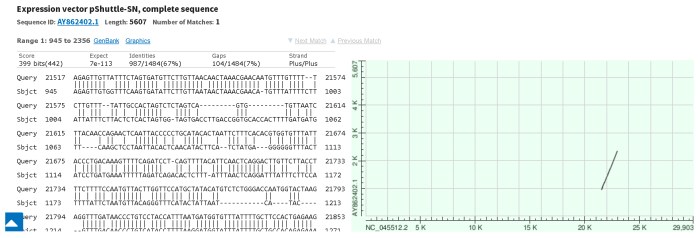
Here’s the nucleotide sequence at NCBI’s Nucleotide database. Here’s a patent for its use in recombination virology.
The pShuttle-SN vector was among many described in a 1998 paper by Bert Vogelstein et al; here is a company where one can purchase the pShuttle-SN vector:

It turns out that the sequence from pShuttle is most closely related to the Spike protein from SARS coronavirus.
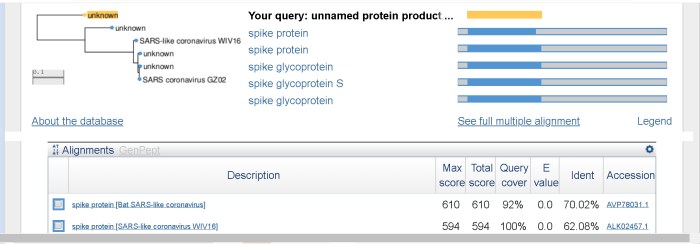
This particular technology was used in 2008 to attempt to develop a more immunogenic vaccine against coronavirus. Here’s a Chinese patent for that technique and product intended for use in a vaccine.
The patent summary reads:
SARS vaccine of adenovirus vector and preparation method, application of coronavirus S gene
Abstract
(translated from Chinese)
The present invention belongs to the field of genetic engineering, particularly relates to adenoviral vector SARS vaccines, their preparation and coronavirus S genes in SARS (SARS) on vaccines for the prophylaxis. By means of biological engineering, the coronavirus S gene in combination with deficient recombinant adenovirus, the protective immunogen protein or polypeptide expressed therein, through expansion culture, purification, and formulation to prepare a mucosal immunogenicity can cause the gene vaccine, respiratory mucosal immune response induced by the body to produce antibodies against the virus infection. Specific conditions of the present invention, compared with conventional inactivated virus particle vaccine, safe, easy to use, without limitation intramuscular, have broad clinical applications.
In 2015, The US called for an end to research creating new viruses in the lab that have increased threat (higher transmissibility, higher pathogenicity, higher lethalithy) (3)

The very researchers conducting studies on SARS vaccines have cautioned repeatedly against human trials;
“An early concern for application of a SARS-CoV vaccine was the experience with other coronavirus infections which induced enhanced disease and immunopathology in animals when challenged with infectious virus [31], a concern reinforced by the report that animals given an alum adjuvanted SARS vaccine and subsequently challenged with SARS-CoV exhibited an immunopathologic lung reaction reminiscent of that described for respiratory syncytial virus (RSV) in infants and in animal models given RSV vaccine and challenged naturally (infants) or artificially (animals) with RSV [32], [33]. We and others described a similar immunopathologic reaction in mice vaccinated with a SARS-CoV vaccine and subsequently challenged with SARS-CoV [18], [20], [21], [28]. It has been proposed that the nucleocapsid protein of SARS-CoV is the antigen to which the immunopathologic reaction is directed [18], [21]. Thus, concern for proceeding to humans with candidate SARS-CoV vaccines emerged from these various observations.” – Tseng et al.,
The disease progression in of 2019-nCoV is consistent with those seen in animals and humans vaccinated against SARS and then challenged with re-infection. Thus, the hypothesis that 2019-nCoV is an experimental vaccine type must be seriously considered.
Evidence for: Sequence homology between INS1378 to pShuttle Coronavirus vaccine; presence of a SARS-like Spike protein in bat coronavirus, otherwise most similar to bat coronaviruses; low bootstrap value.
Evidence against: Low sequence homology (but highly signifiant). NB these viruses are RNA viruses and they can evolve quickly, even under laboratory conditions.
Status: Most likely.
Test: Determine the nucleotide sequence all laboratory types of coronavirus being studied in China (a match will confirm). Find an isolate that matches 2019-nCoV in the wild and reproducibly independently isolate the virus from a wild animal (a match will falsify).
The available evidence most strongly supports that the 2019-NCoV virus is a vaccine strain of coronavirus either accidentally released from a laboratory accident, perhaps a laboratory researcher becoming infected with the virus while conducting animal experiments, or the Chinese were performing clinical studies of a Coronavirus vaccine in humans.
Dr. Dale Brown brought to my attention the studies that have reported serious immunopathology in animals – rats, ferrets, and monkeys – in which animals vaccinated against coronoviruses tended to have extremely high rates of respiratory failure upon subsequent exposure in the study when challenged with the wild-type coronavirus.
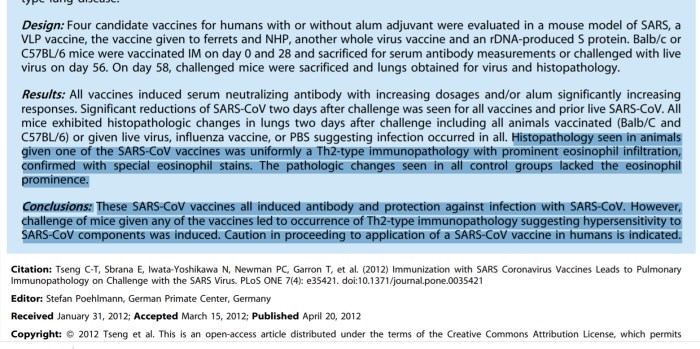
“Caution in proceeding to application of a SARS-CoV vaccine in humans is indicated”- Te et al., 2012 [Full Text]
Yasui et al., (2012) reported severe pneumonia in mice who were vaccinated against SARS who were subsequently infected with SARS.
Another study of a double-inactived SARS vaccine found increased eosinophilic proinflammatory responses in vaccinated mice, especially older mice, writing:
“Importantly, aged animals displayed increased eosinophilic immune pathology in the lungs and were not protected against significant virus replication.”
If the Chinese government has been conducting human trials against SARS. MERS, or other coronviruses using recombined viruses, they may have made their citizens far more susceptible to acute respiratory distress syndrome upon infection with 2019-nCoV coronavirus.
The implications are clear: if China sensitized their population via a SARS vaccine, and this escaped from a lab, the rest of world has a serious humanitarian urgency to help China, but may not expect as serious an epidemic as might otherwise be expected.
In the worst-case scenario, if the vaccination strain is more highly contagious and lethal, 2019-nCoV could become the worst example of vaccine-derived contagious disease in human history. With an uncharacteristic aysmptomatic prodromal period of 5-7 days, individuals returning from China to other countries must be forthright and cooperative in their now-prescribed 2-week quarantine.


